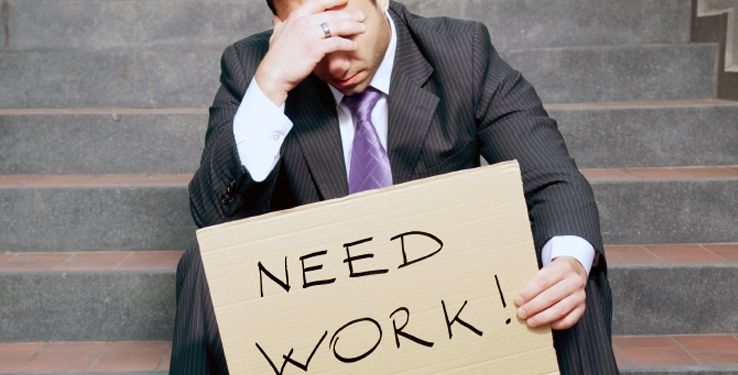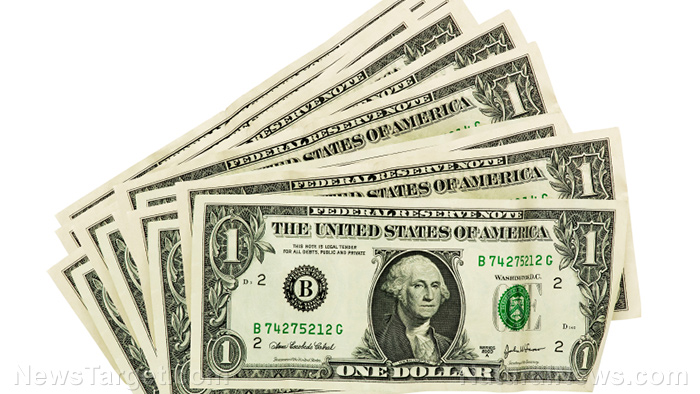Bank of America: US unemployment will climb to 5.6% by end of 2023
09/30/2022 / By Kevin Hughes

Unemployment in the U.S. will rise to 5.6 percent by the end of 2023, warned Bank of America (BofA). Its prediction followed Federal Reserve officials who expressed belief that the central bank’s interest rate target will approach five percent next year.
A research note from BofA’s U.S. economics team headed by chief economist Michael Gapen stated that higher interest rates will make “a harder landing” more possible. The bank had been predicting a five percent unemployment rate for 2023, so the revised prediction amounted to a 12 percent increase.
Unemployment was at 3.7 percent in August 2022, an increase of 0.2 points from July of the same year. Prior to that month, however, the unemployment rate had consistently been at 3.6 percent for four straight months beginning March until June. (Related: Initial unemployment claims remain high as recession fears affect labor market.)
“The Fed’s actions suggest to us that it is committed to reducing inflation and it appears willing to accept some deterioration in labor market conditions,” the BofA economists stated.
The bank predicts the GDP to drop to one percent in the four quarters of 2023. The bank also believes the Fed will elevate its target range for the Federal Funds rate from 4.75 to 5.0 percent.
A quick increase in unemployment like the nearly two hundred basis point hike prediction by BofA is usually considered a marker of a recession. If the bank’s prediction is correct, the U.S. will be in a Sahm rule recession sometime in 2023.
Named after economist Claudia Sahm, the Sahm rule states that a recession has started when the three-month moving average of the national unemployment rate increases by 0.50 percentage points or more compared to its low during the preceding 12 months.
Battle against inflation will be painful, Fed warns
The Fed warned that the battle against inflation will be a painful one, with its latest projections showing that more than a million working Americans will suffer the most.
Members of the Federal Open Market Committee, the policymakers deciding on interest rate hikes, issued new economic estimates on Sept. 21.
Officials at the moment see the unemployment rate rising to 3.8 percent by the end of the year, up slightly from the latest reading of 3.7 percent. It is expected to increase to 4.4 percent next year and remain there through 2024. That is a jump from the previous estimates of 3.9 percent and 4.1 percent in 2023 and 2024, respectively.
Should the projections of Fed officials hold true, the leap in unemployment from July’s low of 3.5 percent to next year’s projection of 4.4 percent translates to almost 1.5 million more Americans going unemployed, based on the current labor force of about 165 million.
If the labor force increases throughout next year, then the 4.4 percent unemployment rate will correspond to even more jobless Americans.
Soaring interest rates slow down economic growth and quiet down demand. This leads companies to control their hiring plans and in certain circumstances lay employees off to reduce costs. Development will be sluggish, unemployment will rise and America will possibly find itself in a self-induced growth recession.
Jerome Powell, chairman of the Fed, said on Sept. 21 that the labor market stays “extremely tight.” However, he added that there will likely be some softening as the central bank aims demand. Powell explained that the fast pace of increases is needed to calm down inflation, and letting prices continue to soar “would mean far greater pain later on.”
“If we want to set ourselves up and really, really light the way to another period of a very strong labor market, we have got to get inflation behind us,” he remarked. “I wish there were a painless way to do that. There isn’t.”
Follow Bubble.news for more news about unemployment in America.
Watch the video below to know why the Federal Reserve is shocked by inflation, which it created on purpose.
More related articles:
Bank of America flags “outrageous” unemployment fraud worth $2 billion.
Bankruptcies, unemployment “imminent” as coronavirus continues to batter the US.
Survey: 63% of small business owners no longer hiring because they cannot afford added costs.
Sources include:
Submit a correction >>
Tagged Under:
Bank of America, bubble, collapse, economic collapse, Federal Reserve, inflation, interest rates, Jerome Powell, labor market, rate hikes, recession, risk, Sahm Rule, unemployment, Unemployment Rate
This article may contain statements that reflect the opinion of the author
RECENT NEWS & ARTICLES
COPYRIGHT © 2021 DollarDemise.com
All content posted on this site is protected under Free Speech. DollarDemise.com is not responsible for content written by contributing authors. The information on this site is provided for educational and entertainment purposes only. It is not intended as a substitute for professional advice of any kind. DollarDemise.com assumes no responsibility for the use or misuse of this material. All trademarks, registered trademarks and service marks mentioned on this site are the property of their respective owners.


















